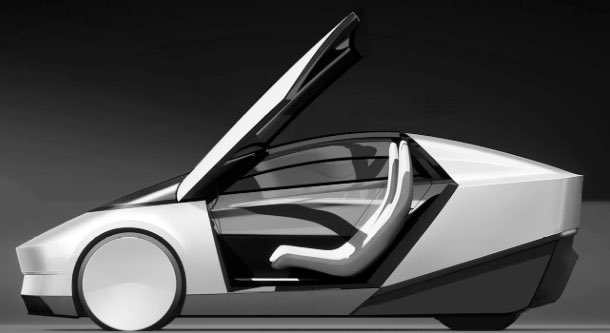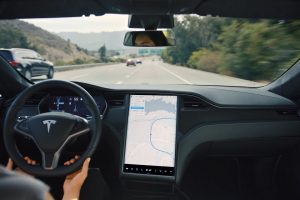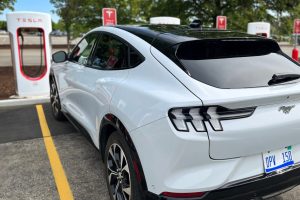- 💼 The NTSB has highlighted that a Ford Mustang Mach-E involved in a fatal crash in San Antonio, Texas, had its BlueCruise active driving assistance system engaged.
- 🚗 San Antonio police indicated that the Mustang Mach-E had “partial automation” activated during the collision.
- 🚨 A witness traveling ahead of the Mach-E reported manually changing lanes to avoid hitting the stationary Honda CR-V, which lacked tail lights or hazards.
- 📝 According to the NTSB, data from the vehicle confirmed that the driver was operating the Mach-E in BlueCruise mode before the crash.
- 🛣️ The NTSB is also investigating a similar crash involving a Ford Mustang Mach-E in Philadelphia, where the vehicle’s active driving assistance system is suspected to have been involved.
- 🤖 Ford’s BlueCruise is marketed as a hands-free driving system for designated “Blue Zones” on highways, receiving positive reviews from Consumer Reports.
- 📈 The NTSB’s scrutiny of Ford’s BlueCruise parallels previous investigations into Tesla’s Autopilot system, which resulted in over-the-air software updates to enhance safety features.
In recent news, the National Transportation Safety Board (NTSB) has shed light on a fatal crash involving a Ford Mustang Mach-E equipped with the BlueCruise active driving assistance system. This incident, which occurred in San Antonio, Texas, has raised questions about the safety and reliability of advanced driver assistance technologies.
Unraveling the Incident
The NTSB’s preliminary investigation revealed that the Mustang Mach-E was operating in BlueCruise mode at the time of the collision. San Antonio police further confirmed that the vehicle had “partial automation” engaged, suggesting that the driver may have been relying on the system’s assistance while driving.
Eyewitness Testimony
An eyewitness traveling ahead of the Mach-E recounted the events leading up to the crash. They reported manually changing lanes to avoid colliding with a stationary Honda CR-V, which was lacking proper lighting signals. This raises concerns about the effectiveness of the Mach-E’s detection systems and the driver’s reliance on BlueCruise in critical situations.
Broader Implications
The NTSB’s investigation extends beyond this specific incident, with a similar crash involving a Ford Mustang Mach-E under scrutiny in Philadelphia. These incidents highlight the need for comprehensive safety evaluations of advanced driver assistance systems like BlueCruise.
Comparison with Tesla’s Autopilot
Ford’s BlueCruise system has drawn comparisons to Tesla’s Autopilot, which has faced its share of scrutiny and regulatory challenges. Both systems offer semi-autonomous driving capabilities, but questions remain regarding their reliability and ability to operate safely under diverse conditions.
Evaluating BlueCruise
Marketing Claims vs. Real-world Performance
Ford has marketed BlueCruise as a hands-free driving solution for designated “Blue Zones” on highways, garnering praise from Consumer Reports. However, real-world incidents like the ones in San Antonio and Philadelphia underscore the importance of validating these claims through rigorous testing and safety assessments.
Addressing Safety Concerns
The NTSB’s investigation serves as a wake-up call for automakers to prioritize safety and transparency when deploying advanced driver assistance systems. Enhancements in sensor technology, data processing, and user interface design are crucial for ensuring the safe integration of these technologies into modern vehicles.
Moving Forward
As the automotive industry continues to embrace automation and electrification, it is imperative for manufacturers to prioritize safety above all else. Collaborative efforts between regulatory agencies, automakers, and technology providers are essential for establishing clear standards and guidelines for the development and deployment of advanced driver assistance systems.
In conclusion, the NTSB’s investigation into Ford’s BlueCruise system underscores the complexities and challenges associated with integrating semi-autonomous driving technologies into vehicles. While these systems hold the promise of enhancing road safety and convenience, their effectiveness and reliability must be thoroughly evaluated to prevent tragic incidents like the one witnessed in San Antonio.





